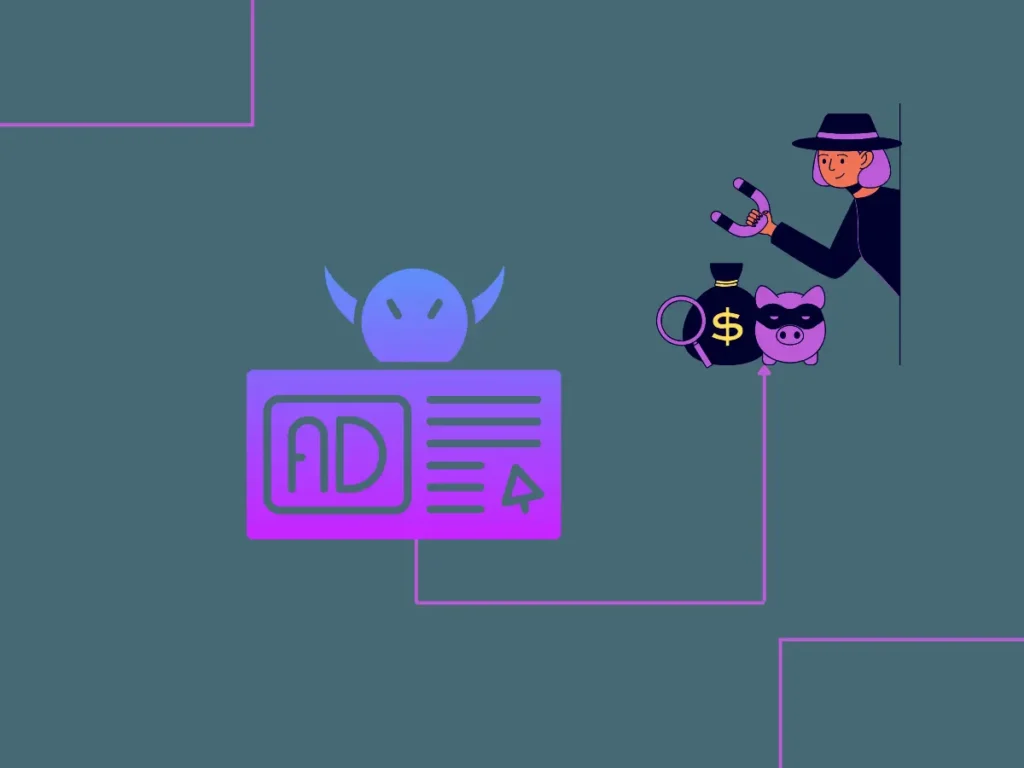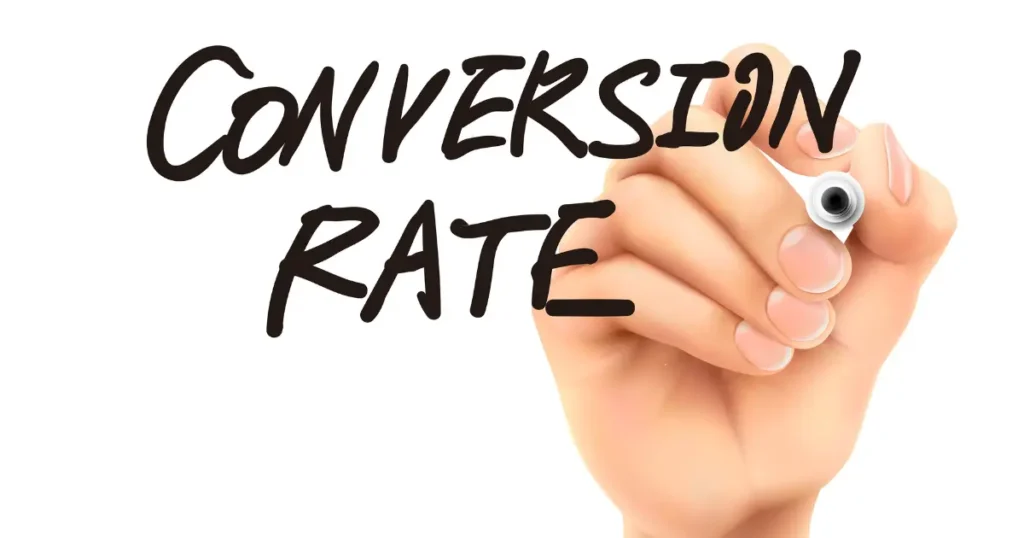
Running PPC campaigns can be exciting; you set up your ads, target the right audience, and wait for the clicks to roll in. But what if I told you that not every click you pay for is actually from a real customer? That’s the dark side of digital advertising, and it’s called ad fraud.
Ad fraud is like a hidden leak in your marketing budget. You might not notice it at first, but over time it adds up to serious losses. Juniper Research estimates that by the end of 2025, businesses will lose about $100 billion to click fraud alone. And the problem is only getting worse, with global losses in digital advertising fraud expected to reach a staggering $172 billion by 2028.
For many businesses, these aren’t just numbers on a report. They’re real dollars wasted on fake clicks and impressions, money that could have gone into reaching genuine customers. You’ve probably even heard stories of advertisers losing thousands overnight, leaving them frustrated and questioning whether PPC is worth the investment at all.
But here’s the thing: you’re not defenseless. Ad fraud might be widespread, but once you understand how it works and what to look out for, you can take control and protect your campaigns. In this guide, we’ll break down the warning signs of ad fraud, share practical steps to prevent it, and help you make sure your PPC budget delivers the results you actually want.
What Exactly Is Ad Fraud?
Ad fraud is essentially any deliberate attempt to manipulate your PPC campaigns for financial gain. Think of it as digital theft; fraudsters use various methods to generate fake clicks, impressions, or conversions on your ads, draining your advertising budget without providing any real value to your business.
The most common types of ad fraud include click fraud (where bots or humans repeatedly click your ads), impression fraud (fake ad views), conversion fraud (false leads or sales), and affiliate fraud (dishonest partners gaming your system). Understanding these different forms of ad fraud is your first line of defense.
Warning Signs Your Campaigns Are Under Attack
Spotting ad fraud early can save you thousands of dollars. Keep an eye out for these red flags that often indicate fraudulent activity:

- Your click-through rates suddenly jump without a corresponding increase in conversions or sales. This disconnect between clicks and business results is a classic sign of bot traffic or click farms targeting your campaigns.
- Also, watch out for unusual traffic patterns in your analytics. Extremely short session durations, unusually high bounce rates, or traffic increase from geographic locations that don’t match your target market can all signal ad fraud. If your cost-per-click is climbing rapidly without better results, fraudsters might be driving up your auction costs.
- Lastly, pay special attention to traffic coming from suspicious IP addresses, or if you notice the same users visiting your site repeatedly without converting. Real customers follow predictable browsing patterns, while fraudulent traffic often shows robotic behavior.
Understanding these signs not only helps you stop fraud but also ensures you’re running the right kind of PPC campaigns for your goals. If you’re unsure which campaign type fits your business best, here’s a helpful breakdown of the different types of PPC ad campaigns you can explore.
How to Prevent Ad Fraud on Your PPC Campaigns
Here are practical steps to protect your advertising budget from Ad Fraud.
1. Monitor Your Traffic Closely
Always keep an eye on where your clicks are coming from. Look at your analytics dashboard to spot unusual increases in clicks, high bounce rates, or traffic from locations you don’t usually target. These are all red flags that point to click fraud and Ad Fraud.
Think of it like checking your bank account for suspicious transactions. If you’re vigilant and know what “normal” traffic looks like, it’s easier to spot when something doesn’t add up. A sudden increase in clicks without a corresponding rise in conversions is typically the first warning sign.
2. Use Click Fraud Detection Tools
Tools like ClickCease, PPC Protect, or Fraud Blocker are designed to detect and block fraudulent traffic in real-time. They analyze IP addresses, devices, and click patterns to stop bots before they drain your ad spend.
These tools act like a security guard for your ads. Instead of manually trying to figure out whether a click is real or fake, the software does the heavy lifting for you. They also provide reports that help you understand where fraud is coming from, so you can tighten your campaigns.
3. Set Up IP Exclusions
Google Ads and other platforms let you block specific IP addresses that you notice are suspicious. If you detect repeated fake clicks from the same IP, exclude it from your PPC campaign to prevent future Ad Fraud.
This feature is powerful because it allows you to cut off fraud at the source. Imagine noticing that one IP keeps clicking your ads five times a day without any conversions. By excluding that IP, you stop the problem in its tracks and save your budget for genuine customers.
4. Adjust Your Geo-Targeting
If you’re running ads for customers in a specific country but notice clicks coming from regions you don’t serve, it’s likely Ad Fraud. Limit your ads to your target audience’s location to cut down on fake traffic.
For example, if you run a bakery in Lagos and suddenly see clicks coming from Eastern Europe, you know something is off. Fine-tuning your geo-targeting ensures that your ads only show to people who could actually buy from you, which makes your campaigns both safer and more effective.
5. Watch Your Conversion Rates
One of the easiest ways to detect Ad Fraud is by checking if clicks turn into leads or sales. If you’re getting hundreds of clicks but zero conversions, you’re likely dealing with fraudulent traffic.

Conversions are the ultimate truth teller. Real customers interact with your landing page, sign up for a newsletter, or make a purchase. Bots, on the other hand, never take those next steps. By comparing clicks with results, you’ll quickly know whether your traffic is genuine.
Of course, even genuine traffic can slip through the cracks if your website isn’t optimized to convert. That’s why it’s important to avoid common pitfalls that hurt performance. Here’s a handy guide on the biggest website conversion rate mistakes to watch out for.
6. Limit Ad Placements
Fraudsters often use shady websites to generate fake clicks. Use placement reports to see where your ads appear, and exclude low-quality sites. This reduces the risk of Ad Fraud in display campaigns.
It’s similar to choosing where to put a billboard. You wouldn’t place one in a deserted alley where no one passes by. Instead, you’d want high-traffic, trustworthy locations. In the digital world, choosing quality placements works the same way and protects you from wasting money.
7. Work with Trusted Networks
Always run your PPC campaigns on reputable platforms like Google Ads or Bing Ads. Third-party ad networks can sometimes be breeding grounds for Ad Fraud.
While smaller networks may promise cheaper clicks, the risks are often higher. Established platforms have stricter monitoring systems and fraud detection tools built in. Think of it as buying from a trusted store versus a back-alley vendor. The safer option usually pays off in the long run.
By following these steps, you’ll not only reduce Ad Fraud but also make your PPC campaigns more efficient. Every click you pay for should have the potential to turn into a customer, not disappear into the hands of bots.
Leveraging Technology and Tools
Modern ad fraud detection relies heavily on automated tools and artificial intelligence. Most major advertising platforms now offer built-in fraud protection features, make sure you’re using them.
Google Ads provides invalid click detection that automatically filters out fraudulent clicks and provides refunds for confirmed invalid activity. Similarly, Facebook and other platforms have their own fraud detection systems. While these aren’t perfect, they catch a significant portion of basic ad fraud attempts.
Consider investing in third-party fraud detection tools, especially if you’re running large-scale campaigns. These tools can provide additional layers of protection and more detailed analytics about potential fraudulent activity.
Measuring Success and ROI

The effectiveness of your fraud prevention efforts should be measured by the quality of your traffic and conversions, not just the quantity. Focus on metrics that indicate real business value: conversion rates, customer lifetime value, and return on ad spend.
Compare your campaign performance before and after implementing fraud prevention measures. You might see a decrease in overall traffic, but if your conversion rates and ROI improve, you’re successfully filtering out fraudulent activity.
The Benefits of Preventing Ad Fraud
When you take steps to prevent Ad Fraud, you’ll notice a big difference in your PPC performance:
- Lower wasted ad spend.
- Higher conversion rates.
- More accurate data for optimization.
- Better ROI on your campaigns.
Protecting your budget from Ad Fraud means your ads actually reach real people who are interested in your products or services.
Frequently Asked Questions About Ad Fraud
Wrapping Up...
Ad fraud prevention is an ongoing process that requires constant vigilance. The fraudsters are always evolving their tactics, so your defenses need to evolve too. Stay informed about new fraud trends, regularly update your prevention strategies, and don’t hesitate to invest in proper protection tools, they’ll pay for themselves by saving your advertising budget from fraudulent activity. And if you’re exploring smarter ways to protect your campaigns, you can book a quick discovery call to get practical insights tailored to your business.
Related Marketing Strategies

What is Business Plan in Entrepreneurship?

Email Marketing for Jewelers 101: How to, Tips and Examples



